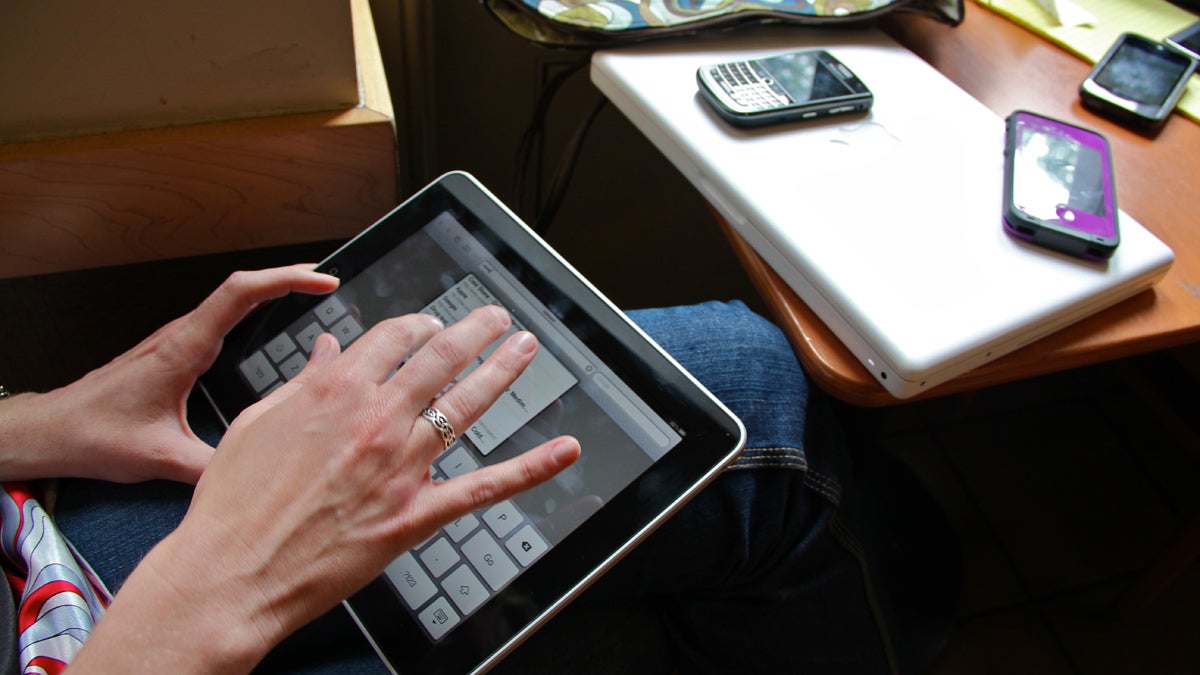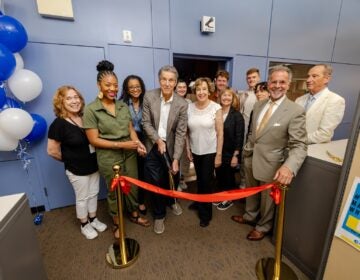Your email is killing your multitasking productivity

A Starbucks customer multitasks. (Emma Lee/for NewsWorks)
You’re hunkered down at your computer working on a spreadsheet or a meeting outline or a legal brief or poetry. You hit a thicket in your thinking and feel like a break would help.
It could. But what we do with that break apparently has more impact than we might think.
If you’re anything like me, you’ve got at least one, if not two or three, personal and professional email accounts running in your browser tabs, and notifications popping up on your smart phone. And when your brain needs a breather, it seems like a good use of your time to switch over and delete, answer or archive a few emails, right?
Not so fast, says Duke University professor and author of the New York Times bestseller “Predictably Irrational,” Dan Ariely. Based on his research, Ariely makes a point that jolted me out of my own usual keyboard MO.
“Email encourages task-switching,” Ariely says. When you get to a tough spot, you might think you can “refresh yourself by jumping to email.” And then you jump back to your task.
Are you really refreshed? Ariely says no — and what’s more, it’s worse than if you hadn’t email-jumped at all.
Timeful presents a Dan Moment: Email Task-Switching from Timeful on Vimeo.
“The cost of email — the fact that you switch gears in your thinking — [is that] your thinking doesn’t automatically switch gears when you come back to your main task,” he says. “And in fact, it can take up to an additional 15 minutes for you get completely engrossed in the task again.”
That’s a game-changer for me. I’m so adept at task-switching on the computer that it comes as second nature. It had never occurred to me that it not only wasn’t helping my primary work but that it was actually setting me back when I returned to something that I needed some creative, thoughtful bandwidth for.
“In all of this switching back and forth, we understand the time off-task,” Ariely says. “But we don’t really understand how delayed and how much mental capacity it will take us once we’re back in the task.”
Which left me with two tools to better manage my computer multi-tasking:
1. Compartmentalize those email tasks.
Don’t keep email as a running stream in your life. Instead, dam it into more clearly structured timeslots during the day. It’s age-old advice (so to speak), but here its wisdom surfaces again.
Keep work email to (roughly) work-day hours.
Don’t assume someone else’s sense of urgency needs to be yours.
Archive things like social invitations or convos for response during a couple of specific times a week.
Systems like Yesterbox can help you prioritize and more efficiently manage a constantly overloaded inbox.
2. Honor my space for the creative, reflective time I need for my primary tasks.
Writing lectures or presentations, as well as items for publication, are important, primary parts of my own workday, and I’ve seen over and over that I can’t get more deeply into those tasks if I forget to allow for a few minutes of “fuzzy” margin time to become engrossed in the task. But even more perfunctory things like meeting notes and internal memos still take focus, intuition and reflection, and those aren’t the things that can be switched on and off.
WHYY is your source for fact-based, in-depth journalism and information. As a nonprofit organization, we rely on financial support from readers like you. Please give today.




